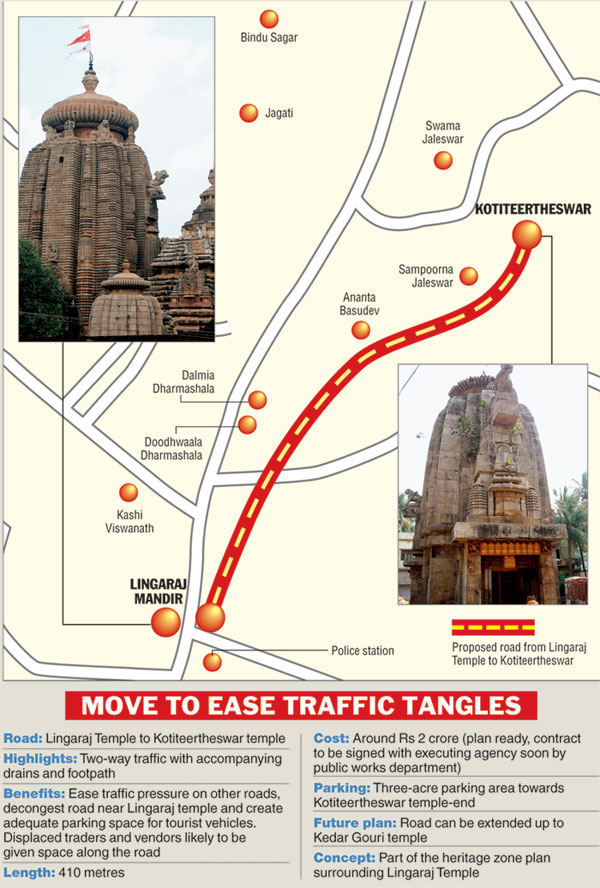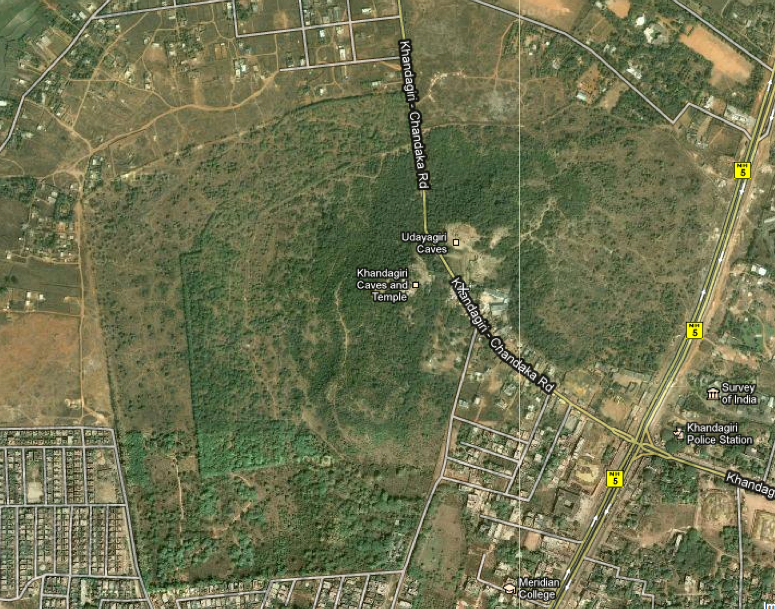Following is from a report in Telegraph.
The capital will soon have a mega-tourist circuit for which the Centre has sanctioned Rs 8.14 crore.
The proposed tourist circuit envisages, among others things, renovation of two major roads in Old Town area, construction of a ‘parikrama’ around Lingaraj temple, soft-lighting for eight protected monuments and two tourism interpretation centres.
While the tourism department is trying to revive Ekamreswar, the miniature temple of Lord Lingaraj near Lingaraj police station, a dedicated road corridor will be constructed to link Puri, the Old Town area and Khandagiri via Dhauli.
Moreover, a 3,000-seater amphitheatre will be constructed opposite Madhusudan Park at Pokhariput.
… Samal spoke to reporters after the heritage walk, which was held today as part of World Tourism Day function.
The circuit will aim at facilitating various cultures as the city is perhaps the only one place in the region where three major religions — Hinduism, Jainism and Buddhism — have their presence and the Daya riverbed is linked to the transformation of Emperor Ashok from Chandashok to Dharmashok.
… While the mega circuit will be part of the development of the ambitious Bhubaneswar-Puri-Chilika tourism sector, the Old Town area of the city will have a 40-feet road near the temple connecting Kotitirtheswar Lane and a proposed three-acre parking site.
Later, the same road will be extended up to Kedar Gouri temple. These two roads, in turn, will provide a better corridor so that tourist vehicles can pass through the areas smoothly. Similarly, a ‘parikrama’ or circular road will be planned around the Lingaraj temple.
“Apart from providing better connectivity to the Old Town area, the side walls of various buildings and structures will be decorated with tiles of red laterite stones. The concept has already been adopted in various western cities and states such as Rajasthan. …
The mega circuit will also emphasise on infrastructure development to connect various sites of Buddhist and Jain religious interests. Other than central assistance, there is also a plan to develop a road connecting Gangua nullah (through its right embankment) to the historical Kapileswar village. Another road will link Ganesh Ghat near Dhauli Peace Pagoda with the Jatni Kapilaprasad Road.
According to the pre-feasibility report, the state government will spend more than Rs 30 crore on the two proposed roads.
“These two roads will connect Dhauli with Khandagiri and the travellers and tour operators need not take the longer Cuttack-Puri Road via Rasulgarh to reach the historical Jain sites. Even nature lovers visiting places such as Deras in Chandaka or Nandankanan Zoological Park can take this road in future,’’ said the MLA.
“The state government has also asked the Bhubaneswar Development Authority to construct an amphitheatre opposite Madhusudan Park in Pokhariput. This will resemble the amphitheatre at the Utkal Sangeet Mahavidyalaya near Rabindra Mandap,’’ he said.
Sources at the public works department said: “There is a plan to construct a flyover over the railway level crossing at Pokhariput for Rs 42 crore. While the state government will share Rs 22 crore, the rest will come from the railways. Once the flyover is commissioned, the road from Dhauli to Khandagiri will become a vital link to various religious centre.’’
Under the mega tourism circuit, temples such as Lingaraj, Rajarani, Mukteswar, Rameswar, Parsurameswar, Lakshmaneswar, Bharateswar and Satrughneswar will be illuminated with light emitting diode based ‘dynamic lighting system’ for which Rs 3.98 crore will be utilised. The project will be executed by the Orissa Tourism Development Corporation.
Hinting at the development of two interpretation centres near the Lingaraj temple, Samal said: “While one will be constructed on the premises of Sibatirtha Mutt, the other one will come up near the employees’ colony.’’
On the proposed tourist interpretation centre near Khandagiri-Udaygiri caves, he said the project would be completed within two or three months time.
Following is from a report in Business Standard.
The Orissa government has decided to promote heritage tourism at eight locations along the coast line with an investment of Rs 7.41 crore in the next five years.
Based on archeological, architectural, sculptural and historical importance, the selected structures, identified by the state archeology department, would be taken up under the World Bank funded Rs 227.64-crore Integrated Coastal Zone Management Project.
… The structures identified to get a face lift under the scheme included Potagarh (Buried Fort), located on the bank of river Rushikulya in Ganjam town which stands as a mute witness to the vicissitudes of history in Orissa.
Apart from historic Potagarh, the British Cemetery near Ganjam town, Bhaba Kundaleswar temple of Manikapatna, Baliharichandi temple near Puri, Hariharadeva temple, Nairi, Bateswara temple, Kantiagada (Ganjam), Jagannath temple, Pentha and Jamboo Colonial Building, Kendrapara will be refurbished under the scheme.
Preservation of ancient monuments under the project will include their protection, structural conservation, chemical conservation, landscaping and maintainance from time to time.
… The officials of the Gujarat and West Bengal projects along with a World Bank team visited various places including Ganjam and Kendrapada districts in the state recently to review the implementation of the project. Project Director of ICZM (Orissa) AK Pattnaik briefed the team about various steps taken under the project and their progress. The scheme, whose tenure spans from 2010 to 2015, is being implemented in two coastal stretches: Paradeep to Dhamara and Gopalpur to Chilika.


